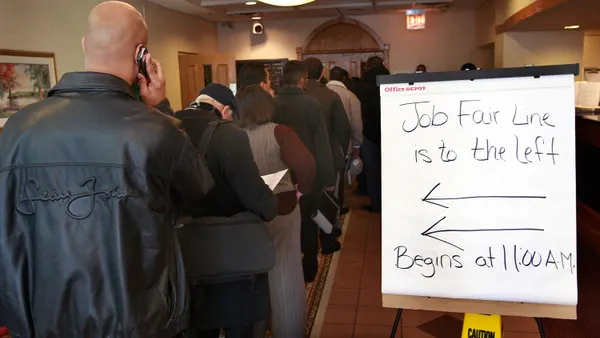Moving away from defined benefit (DB) plans as the primary retirement program does not require terminating the plan outright. Instead, organizations have leaned on other means to reduce the risk and costs that DB plans bring, without terminating the plan.
In an environment with heightened levels of interest rates, plan administrators can incorporate such de-risking strategies to greater effect. It gives them the ability to move the risk from the business’s balance sheet, while providing benefits to those employees that had qualified for the plan.
Through these measures, such as utilizing lump-sum windows or opting for an annuity buyout, plan sponsors can reduce contribution and funded status volatility. This increases the viability of the plan while the organization shifts to another retirement program for other employees.
“The cost of the obligation and the balance sheet liability goes down significantly during rising interest-rate environments, which boosts funded status,” said Jarboe. “When that’s combined with certain timely employee notification requirements under SECURE 2.0, pension risk transfer may become more attractive to pension plans.”
But, to achieve such results, it requires the proper data and insight to gauge the impact.
Lump-sum windows
Lump-sum windows continue to give plan sponsors a valuable tool in transferring risk of the plan. According to a survey of financial executives by CFO Dive and Mercer, 85% of respondents have used lump sum actions, while 80% said they were “likely” or “very likely” to use them in 2023 or 2024.
The lump sum window allows participants to take a distribution, essentially “cashing out” the plan. They can then manage the funds as they best see fit, after rolling over the investment to their own account. This reduces liability for the organization while providing control for the participant to invest in the manner that reflects their personal goals and needs.
The current rate environment, along with changes that went into force under the Secure Act 2.0, has improved the viability and effectiveness of lump sum windows. Due to these trends, the survey found that 20% of respondents said the organization extended the lump-sum window option to active participants over 59½.
Traditionally, lump-sum windows are primarily provided to deferred vested participants.
Annuity buyouts
One common risk factor that plan sponsors face is longevity risk, or that participants will live far longer than expected resulting in larger payouts. But insurance companies are exceptional at managing longevity risk, which is why the annuity buyout option has become a key component to transferring risk within the DB space.
From the survey, 55% of respondents were “likely” while 25% were “very likely” to purchase annuities in order to transfer and reduce the risk of the plan. Its popularity grows, in part because of the current rate environment.
Not only that, but the insurance sector has increased capabilities and offerings to encourage the purchase of annuities tied to the DB plan. The highest Q1 risk transfer ever recorded occurred in 2023, when $6.1 billion was transferred. The second quarter followed that mark with the third highest Q2 transfer amount, of $8.1 billion.
Not every organization will want to utilize this tactic. Those not moving forward with an annuity buyout, did so because of the cash funding implications (42%), adverse accounting implications (38.2%) and concerns about the annuity premium price (33.6%), as well as general concerns about the impact on employees based on how the program will be administered.
Determining your approach
To accurately come to a de-risking decision, however, requires precise data and calculations. These will provide plan sponsors with the right analysis when coming to a conclusion. According to the survey, 25% of plan sponsors believe their data is pristine enough to proceed with an immediate risk-transfer execution. That mark was down from 48% in 2021.
This indicates that the financial executives have become more aware of the data management necessity during the risk-transfer process, more than it reflects a change in the quality of data.
Ensuring accurate and complete data can result in a much more laborious process for risk transfers or termination. Beginning the data development process early is key to the risk transfer. Plan sponsors will want to avoid delays to any strategy due to requiring a more complete data collection.
Mercer and CFO Dive delve further into this data collection process and requirements when undergoing a de-risking strategy in the latest research report, “Two emerging camps: US pension sponsors gaining clarity around sustaining vs. terminating their plans.” You can download the full report here.










